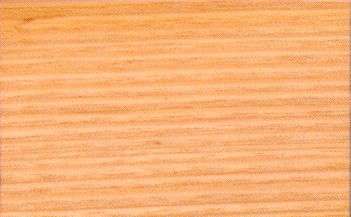
Alpine ash (Eucalyptus delegatensis)
Family: Myrtaceae
Common names: Alpine ash, Australian oak, Eucalyptus, Gum top stringy bark, Mountain ash, Red mountain ash, Southern mountain ash, Stringy bark, Tasmanian oak, Victorian ash, White top stringy bark, Woollybut
Distributed in: Australia (Oceania and S.E. Asia)
Distribution overview: Eastern Victoria, extreme southeastern New South Wales in Australia.
Common uses: Agricultural implements, Baseball bats, Boat building (general), Boat building: planking, Boxes and crates, Cabinetmaking, Carvings, Cooperages, Flooring, Food containers, Furniture, Handles: general, Heavy construction, Joinery, Ladders, Light construction, Matches, Moldings, Oars, Paneling, Particleboard, Plywood corestock, Plywood, Poles, Pulp/Paper products, Skis, Sporting Goods, Tool handles, Toys, Turnery, Vats, Vehicle parts, Wheel spokes, Wheels
Tree size: Trunk diameter is 150-200 cm
Colors: the heart isYellow, Yellow to golden-yellow to orangeand the sapwoodWhite, Yellow.The grain isWavy, the textureMediumand the lusterMedium
Natural durability: Susceptible to marine borer attack, Very durable
Kiln Schedules: Kiln Drying Rate (in days) is rather slow
Kiln Drying Rate: Slow (18-28 days for boards < 32 mm, to 52-84 days for boards >= 63 mm)
Drying Defects: Severe collapse and honeycomb, Slight surface checking
Ease of Drying: Moderately Difficult to Difficult
Tree Identification: Bole/stem form is straight
Comments: General finishing qualities are rated as good
Blunting Effect: Blunting effect on sawing dry wood is moderate
Cutting Resistance: Easy to saw
Gluing: Moderate gluing properties
Nailing: Holds satisfactorily, Pre-Boring Recommended
Planing: Planes well, to a good finish
Resistance to Impregnation: Sapwood is permeable
Response to hand tools: Moderate working qualities
Routing recessing: Satisfactory routing results
Veneering qualities: Moderately easy to veneer, There is slight to moderate drying degrade and the potential for buckles and splits
Steam bending: Very good
Screwing: Easy to screw, Fairly Difficult to Very Difficult; Turning: Fairly Difficult to Very Difficult
Painting: Very Good to Excellent; Polishing: Very Good to Excellent; Staining: Very Good to Excellent; Varnishing: Good;
- Numerical data Metric
- Numerical data English
- Strength properties
- References
 |
 |
 |
 |
| Item |
Green |
Dry |
Metric |
| Specific Gravity |
|
|
|
| Density |
|
641 |
kg/m3 |
| Bending Strength |
643 |
1006 |
kg/cm2 |
| Crushing Strength |
362 |
553 |
kg/cm2 |
| Hardness |
|
451 |
kg |
| Impact Strength |
|
|
cm |
| Shearing Strength |
|
116 |
kg/cm2 |
| Stiffness |
119 |
137 |
1000 kg/cm2 |
| Tangential Shrinkage |
|
|
% |
| Radial Shrinkage |
6 |
|
% |
| Weight |
624 |
496 |
kg/m3 |
| Maximum Load |
|
|
cm-kg/cm3 |
| Toughness |
|
|
cm-kg |
| Static Bending |
|
|
kg/cm2 |
|
 |  |  |  | | Item | Green | Dry | English | | Bending Strength | 9158 | 14311 | psi | | Density | | 40 | lbs/ft3 | | Hardness | | 995 | lbs | | Maximum Crushing Strength | 5159 | 7875 | psi | | Shearing Strength | | 1652 | psi | | Stiffness | 1695 | 1956 | 1000 psi | | Weight | 39 | 31 | lbs/ft3 | | Radial Shrinkage | 6 | | % | | Tangential Shrinkage | 10 | | % | |
Density (dry weight) = 38-45 lbs/cu. ft. 0
Bending strength (MOR) = medium 0
Modulus of Elasticity (stiffness) = medium 1
Density (dry weight) = 46-52 lbs/cu. ft.
Max. crushing strength = medium
Shearing strength (parallel to grain) = low
Density (dry weight) = 31-37 lbs/cu. ft.
Max. crushing strength = high
Shrinkage, Tangential = large
Hardness (side grain) = soft
Shrinkage, Radial = large
Modulus of Elasticity (stiffness) = low
Modulus of Elasticity (stiffness) = high
Bending strength (MOR) = low
Shrinkage, Radial = fairly large
Shearing strength (parallel to grain) = medium
Bending strength (MOR) = high
Australia - N.S.W. Forestry Commission,1968,Working Properties of some Native and Imported Timbers,Forestry Commission of New South Wales, Technical Publication No.8Australia - N.S.W. Forestry Commission,1988,Furniture Timbers of New South Wales,Forest Commission, N.S.W., Aust. Tech. Publication No.1Banks, C.H., Schoeman, J.P., Otto, K.P.,1977,The Mechanical Properties of Timbers with particular reference to South,Africa,South African Forestry Research Institute Bulletin,(Ed.,Schoeman, J.P. 1973 & Otto K.P. 1976,No.48Boas, I.H.,1947,The Commercial Timbers of Australia - Their Properties and Uses,Council for Scientific and Industrial Research, MelbourneBolza, E., Keating, W.G.,1972,African Timbers - the Properties, Uses and Characteristics of 700 Species,C.S.I.R.O. Div. of Building ResearchBolza, E., Kloot, N.H.,1963,The Mechanical Properties of 174 Australian Timbers,C.S.I.R.O. Division of Forest Products Technological Paper,No.25Bolza, E.,1976,Timber and Health,Div. Building Res. C.S.I.R.O. AustraliaFarmer, R.H.,1972,Handbook of Hardwoods,HMSOForests Products Research Laboratory, U.K.,1956,A Handbook of Hardwoods,Forest Products Research Laboratory, Princes Risborough, Department of,Science and Industrial Research, Building Research EstablishmentHaslett, A.N.,1988,Properties and utilisation of exotic speciality timbers grown in New,Zealand Part V: Ash Eucalypts and Eucalyptus nitens E. regans,,E.delegatensis, E.fastigata, E.obliqua, E.sieberi, E.fraxinoides, E.nitens,New Zealand Forest Service, Forest Research Institute, FRI Bulletin No.119I.U.F.R.O.,1973,Veneer Species of the World,Assembled at F.P.L. Madison on behalf of I.U.F.R.O. Working Party on,Slicing and Veneer CuttingScott, M.H.,1935,Weights of South African Growth Timbers,South African Department of Agriculture and Forestry Bulletin,No.145,Forest Products Institute, Forestry Series No.1Takahashi, A.,1978,Compilation of Data on the Mechanical Properties of Foreign Woods (Part,III) Africa,Shimane University, Japan, Research Report on Foreign Wood No. 7The Australian Timber Journal & Building Products, Merchandiser,1969,Timber Durability and Preservation,Supplement to Australian Timber Journal 35(4) Tech. Timb. Guide No.8Thomas, A.J.,1955,Tasmanian Woods,Forestry Department Tasmania, Bulletin No.1Timber Development Association,1942,Tasmanian Oak - Eucalyptus obliqua, E. regnans and E. gigantea,TRADA Timber Leaflet No. 30
|








